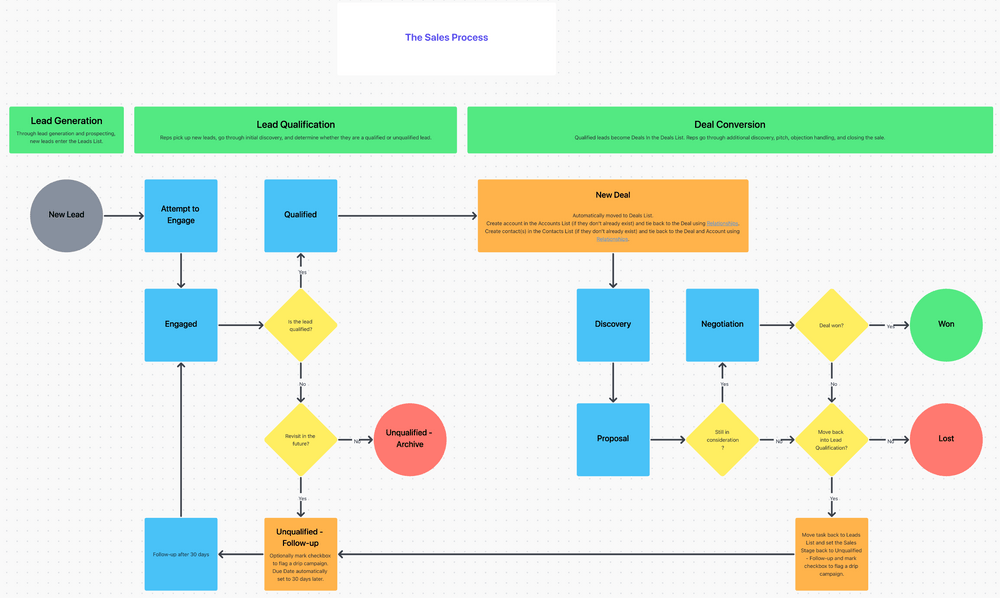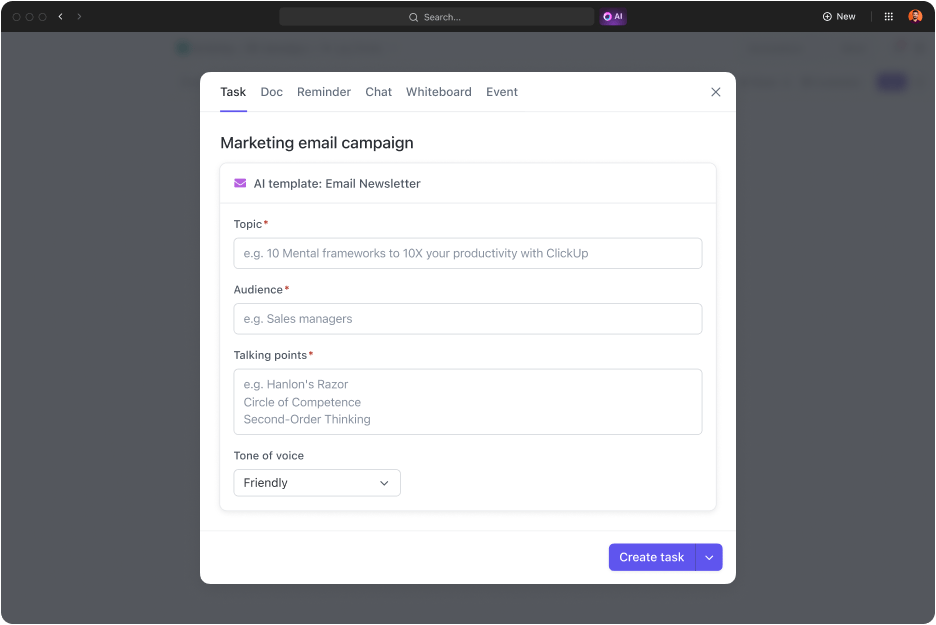Customer Lifecycle Management: Definition, Strategies, & Tips

Sorry, there were no results found for “”
Sorry, there were no results found for “”
Sorry, there were no results found for “”
If you’ve ever aspired to be a rockstar (who hasn’t, right?), then you probably dreamt of securing record deals, performing live, releasing albums, topping charts, and so on. We’re pretty sure the dream didn’t include becoming a one-hit wonder. We’d rather have sustained success than a one-off flash in the pan.
The business world mirrors this sentiment.
Running a profitable and sustainable business requires more than just attracting new customers. It also involves making existing customers stick. The objective is to build a loyal customer base rather than seek fleeting attention.
Here’s where customer lifecycle management enters the picture.

The customer lifecycle includes the entire customer journey, from the moment they become aware of you, to purchase—and even beyond. It shows you how customers make purchase decisions and interact with your brand across different touchpoints at different stages.
You can optimize sales and marketing strategies for maximum success based on such insights.
A typical customer lifecycle can be divided into six stages. These customer lifecycle stages are:

In the first stage of the customer lifecycle, potential customers become aware of your brand, products, or services. Your aim would be to sustain this passing interest and leave a lasting first impression.
To achieve this result, you will try to be present where your target customer group can be found. To this end, you might:
Now that your potential customer has warmed up to your brand or products/services, it is time to push for engagement. You can do this by sharing valuable and relevant information that helps answer their questions or address their problems. You want to deepen their interest and support their pre-purchase research while building a strong connection.
As such, customer engagement involves:

After priming your prospects with engagement marketing strategies, you can start to nudge them into action, typically making their first purchase. This customer lifecycle stage, called conversion or acquisition, is where a potential customer transforms into a paying customer. In some cases, conversion may also include winning back a cold or lost lead.
To enable this transition, you will:
Remember how we said repeat customers are far more valuable than the one-off ones? During the customer retention stage, you focus on keeping your customers satisfied so they come to you with more business.
The goal is to become their top pick, and to do this, you’ll have to:
Once you’ve retained customer interest, it is time to convert it into something stronger—loyalty. Loyal customers bear an allegiance to your brand and trust your products, even the new ones you launch subsequently.
Ideally, your brand should be the first to come to their mind whenever they’re about to purchase. To get to this point, you may have to:

Sure, loyal customers are nice to have, but advocates are in a league of their own. They will recommend your brand to friends and family, promote it through word-of-mouth marketing, and grant credibility to your brand. For this reason, consider advocacy the endgame of the customer lifecycle.
Here’s how you can win over your existing customers and make them brand evangelists:
Let’s focus on how to make these customer lifecycle stages work for you—through customer lifecycle management.
Customer Lifecycle Management (CLM) is a business strategy deployed to understand, manage, and optimize the customer journey. Its goal is to track the customer journey from initial awareness or discovery to purchase and, ultimately, advocacy.
Use the customer insights gained to eliminate friction and make the customer flow as seamless as possible. At the same time, you can provide value at every touchpoint and add contextual interventions to encourage movement through the various stages of the customer lifecycle. Such orchestration continues until the prospect becomes a customer and then a brand advocate.
What makes customer lifecycle management important? Customer-centric businesses know that a strategically planned CLM process has many advantages, such as increased customer retention and higher satisfaction rates.
By addressing customer requirements at every touchpoint and delivering value at every interaction, CLM boosts the overall customer experience, leading to higher customer satisfaction.
From personalized onboarding emails to new customers to the launch of self-service tools to improve customer experience, CLM makes the customer journey seamless at each stage.
Satisfied customers will effortlessly move through – and even re-enter – the sales and marketing funnels to trigger the loyalty loop and customer success.
Let’s also talk about the impact of CLM on customer retention. Rather than focusing on the narrow goal of clinching a sale, CLM offers a wider perspective on customer relationships that extends to post-purchase servicing, loyalty programs, and continued support. Such engagement improves customer retention, reduces churn, and generates repeat business.
With CLM, you can gain an overview of the customer journey. It lends visibility to the rationale behind different customer decisions, high-impact stages of the customer lifecycle, and gaps that lead to churn. Pair such insight with customer behaviors, preferences, and conversion points to dynamically and strategically allocate resources for maximum utilization and impact.
There’s no debate that CLM has direct links to customer retention and satisfaction. However, it has another crucial benefit—improved profitability. . Did you know that personalization can create a revenue uplift of 10-15%? Or that a 5% increase in loyal customers can drive profits up by 25-95%? Plus, with more efficient resource utilization through CLM, you can cut operational overheads.

CLM eliminates guesswork from customer relationship management. It leverages data to track customer behavior and preferences across different stages and segments. It also highlights what compels repeat customers to return to your business. Such valuable insights fuel effective decision-making at all levels of the business.
If you’re excited to start leveraging the benefits of customer lifecycle management, here’s how you can get started:

The customer is at the heart of every CLM activity or decision. To ensure you make the best use of customer data and insights, you’ll want to house all of it in one place. Hence, your first step should be to invest in a Customer Relationship Management (CRM) tool.
CRM forms the backbone of all CLM operations. Use it to view your target audience, prepare ideal customer profiles, segment customers, map customer behaviors and preferences, create templates, and so much more. We’ll discuss each of these tasks individually, as they are components of CLM.
Although CRMs are useful on their own, you can enhance their capabilities by integrating them with a project management tool. Here’s why:
Before prospective customers discover your business, you need to discover them first. To identify your target audience, start with market research. While conceptualizing a product or a service (or even your business), you might have had a specific section of the population as your target audience. Once you have a broad idea, nail down the specifics by considering existing customers.
Finally, segment or categorize your entire prospective customer base by demographics, behaviors, preferences, etc., to tailor your marketing messages and strategies accordingly.
By identifying and segmenting your target audience, you’ll be one step closer to creating your Ideal Customer Profile (ICP).
ICP is a collection of common features that define the most relevant people from your existing customers. Their customer data particulars, such as demographics, spending capacity, behaviors, etc., are granularly well-aligned with the product or service you offer.
These high-value customers bring in the most revenue or business to your brand and will have a high lifetime value. They embody Pareto’s Principle, with 20% of your loyal customers raking in 80% of your sales and revenue.
Depending on the complexities of your product or the diversity of your services, you may have more than one ICP.

Once the ICPs are ready, it is time to use them to view the customer’s journey.
Customer journey mapping is a tool that visualizes the journey of new customers as they go through the different stages of the customer lifecycle – from awareness to advocacy. These CLM maps help you tailor specific strategies for each phase. They are also a window into customers’ thoughts, emotions, opinions, and pain points as they make purchase-related decisions. With these insights, you can plan resources and interventions to improve your chances of success at each touchpoint.
After mapping user journeys, you can decide what you want to achieve through customer lifecycle management. This will also depend on your business goals, such as improving retention, scaling customer acquisition, reducing the number of service calls, etc.
By studying customer data, you can:
Content marketing is a staple across the customer journey—regardless of the stage. You might use social media platforms to generate awareness, or email to share upsell and cross-sell offers. However, for your content strategy to be effective, it has to be based on a solid understanding of your customer.
Once you’ve created your customer lifecycle maps and identified the customers’ changing requirements at each stage, it’ll be easier for your marketing team to plan the kind of personalization and content needed at every step. For instance, search-engine-optimized content may get you organic traffic during the Discovery stage, case studies or personalized emails with segmented offers would help drive conversions, and so on.
Although CLM orchestrates the entire customer journey from awareness to advocacy, everything boils down to the purchase experience. If you don’t make it easy for prospective customers to buy from you, all your work on the other stages of the lifecycle might come to naught. For this reason, optimizing the purchase stage becomes a lynchpin of all your customer lifecycle management activities.
The best way to eliminate friction is to simplify the purchase journey. Even though rule-of-thumb concepts like the Three-Click Rule may be debated (and not universally applicable), they do indicate that simplicity can drive conversions.
Next, analyze cart abandonment data to understand why sales-ready customers leave. With seven out of ten carts not making it to checkout, considerations like free shipping, express delivery, and the ability to buy without creating an account can tip the scales in your favor.
Depending on the complexity of your product or service, customers may face indecision at the purchase stage right when they’re keying in their credit card details. It could be due to cold feet, creeping buyer’s remorse, or even last-minute confusion regarding the subscription plan.
Extend hand-holding at this stage to prevent such prospects from dropping off. For instance, send reminder emails to customers with products sitting in the cart for too long. Alternatively, add a live chat option at the checkout page to help customers connect with an expert without navigating away. Such proactive support and assistance can increase conversion rates.
Congratulations on winning over the new customers!
Now, you must focus on translating their first purchase into long-standing customer loyalty. Start by thanking them for doing business with you. If you’re selling physical products, share the shipping details, along with an estimated delivery date. Alternatively, share a product usage or installation guide for instantly delivered digital goods, online courses, or subscriptions. Request feedback on the purchase or delivery experience or on the product itself.
The aim is to make the onboarding process seamless and the post-purchase experience rewarding. This way, the customer feels valued and better prepared to use the product effectively.

Continued support and service personalization are essential to your customer retention strategy. At this stage, the customer lifecycle marketing strategy primarily involves anticipating customer needs or challenges and addressing them proactively. For instance, your support teams could reach out to customers with relevant information, solutions, or assistance to increase product or service adoption.
On the other hand, personalization involves making recommendations based on the customer’s purchase history, past interactions, or preferences. For instance, a customer who has bought diapers from your e-commerce store may appreciate emails with offers on baby food, children’s toys, etc.
Such a two-fold approach to customer service and support demonstrates your commitment to helping customers achieve their goals.
Businesses in different sectors may have different definitions of customer loyalty. Some might consider the duration of time a customer has spent with them as a user; others may base it on a certain minimum number of transactions. Whichever way you define it, you should look to reward customers for their loyalty.
Loyalty programs are a simple way to acknowledge their role and contributions to your business. Offer loyalty points, share exclusive access to sales, offers, or discounts, organize special events, or share other incentives to show your appreciation.
While you’re at it, also find ways to promote advocacy. Running referral or affiliate marketing programs can encourage loyal customers to spread the word about your business through word-of-mouth.
Once you’ve established your CLM process, you’ll need to check regularly to ensure it stays relevant. Modern-day customer journeys are a function of market conditions, customer behaviors, and several other dynamic parameters, so you need frequent customer lifecycle analysis.
Here are some metrics you can use to analyze your customer lifecycle:
Continuously test and analyze the effectiveness of your CLM strategies using data-driven insights and metrics. Additionally, factor in customer feedback to understand how customers wish to engage with your brand. The resulting flexibility will make your business more receptive and resilient to change.
We hope this discussion of all things CLM was helpful to you. With effective customer lifecycle management, you can balance your product or service capabilities with the requirements and expectations of your customers.
Fortunately, you don’t need a dozen tools to manage your customer lifecycle efficiently— ClickUp can take care of it all.
ClickUp is an all-in-one platform that helps businesses with a variety of workflows and operations—not just limited to customer lifecycle management. Here’s a quick overview:
We’ve already mentioned how customer relationship management is the building unit of CLM. ClickUp is a one-stop destination for all your customer data, with powerful and intuitive tools to segment, classify, and categorize customers based on their perceived lifetime value. Use such insights to curate every step of the customer lifecycle without switching between applications!
With the ClickUp CRM, you can manage all your customer data, create segmented campaigns, analyze their performance, and reach out to customers and prospects.

Our library of ClickUp CRM Templates is a jumping-off point for businesses looking to leverage ClickUp. Stop reinventing the wheel when you can templatize success!

Simplify customer lifecycle marketing with a smart AI writing assistant that can tailor content to your requirements. From different marketing messages to meeting agendas and status reports, ClickUp AI can draft them all!

Use interactive and engaging forms to capture customer feedback and convert them into actionable and trackable tasks. With ClickUp Form View, you can act on creative requests, turn customer-led insights into product improvements, and ultimately reduce friction in the marketing and sales funnel.

ClickUp is a powerhouse for businesses looking to optimize customer lifecycles. Conduct meaningful conversations, deliver value at every touchpoint, and earn customer favor with ClickUp! Take ClickUp for a spin today.
© 2026 ClickUp